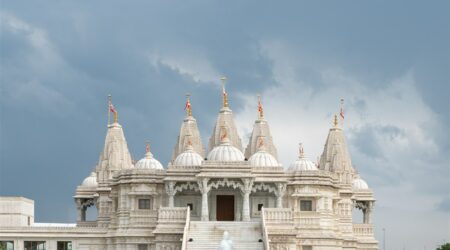By KS Tomar
“Seeing is believing” got its origin in the 17th century and attributed to English clergyman Thomas Fuller though his actual proverb was “seeing is believing, but feeling is truth”.
This is exactly what G-20 tourism meet in Srinagar proved to the world as diplomats across the aisles descended on the Sheikh ul-Alam airport.
China, Pakistan, Turkey were expected in their response to boycott the summit meeting while few others like Saudi Arabia, and Egypt also fizzled out at the last moment under the pressure of the imagined concept of ‘ummah’.
China also supported Pakistan blindly at United Nations in protecting dreaded terrorists like Jaish-e-Mohammed Masood Azhar, Abdul Reman Makki, etc. by vetoing the proposal at United Nations while Pakistan which is vehement on the ‘imagined’ causes of Indian Muslims remains mum on condition and exploitation of Uyghur in Xinjiang province of China.
Experts say that despite skipping of meeting by China, Pakistan, Saudi Arabia, Turkey and Egypt, none can deny the fact that there was a huge response from the G-20 members including Argentina, Australia, Brazil, Canada, France, Germany, Indonesia, Italy, Japan, South Korea, Mexico, Russia, South Africa, United Kingdom, United States, and the European Union.
The participants’ response clearly reflects the global approval of the truth that they do not consider Kashmir as a disputed territory and such an indelible impression has been carried by all delegates to their respective countries thereby isolating the handful of opposing nations.
Kashmir has been an integral part of India but the Indian government’s relentless efforts to successfully organize G-20 international meet of its members on tourism, including largest economies of the world after the abrogation of article 370 on August 5, 2019 acts as an eye opener to the rest of the world.
It is likely that the negative advisories may be withdrawn to permit travelers to Kashmir’s picturesque valley and to enjoy Zabarwan range between Pir Panjal and Great Himalayan range in union territory of Jammu and Kashmir.
Secondly, the security concerns of the international community were belied as participants departed with a feelings of positivity which can be attributed to their enjoyment of the session of Yoga prior to visiting beautiful Nishat Garden and Royal Spring Golf Course on the banks of the Dal Lake.
As a part of G-20 tourism meet, a draft on ‘National Strategy on Film Tourism’ (NSFT) was also unveiled to promote Kashmir on the film tourism map of the world. It was discussed by six participating countries including Spain, Singapore, Mauritius, Nigeria, South Africa and Brazil with a focus on global perspective and economic benefits.
The Ministry of tourism in India emphasized the need of preserving the environment while focusing on adventure and ecotourism. Moreover, the Jammu and Kashmir government has identified 300 unexplored destinations for film shooting that have potential to attract national and international production houses and filmmakers.
Terrorism has remained a state policy of Pakistan against India since independence. Though this double edged policy is already bleeding that country through thousands cuts but the ‘establishment’ remains adamant to protect its own hegemony while people suffer.
Now people of Jammu and Kashmir expect a spurt in the influx of foreign travelers in the future. The state receives around 1.88 crore tourists though majority comprises travelers as well as devotees to Vaishno Devi Temple and Amarnath shrine, but the valley has got its share of 26 lakh tourists which is expected to go up.
The success of the Srinagar G-20 meet on tourism has sent a strong message to the entire world not only about the Indian position of Kashmir but also regarding the capacity and potential of India to shoulder the current responsibility of presidency of G-20.

(KS Tomar is a senior journalist based in Shimla, India.)












